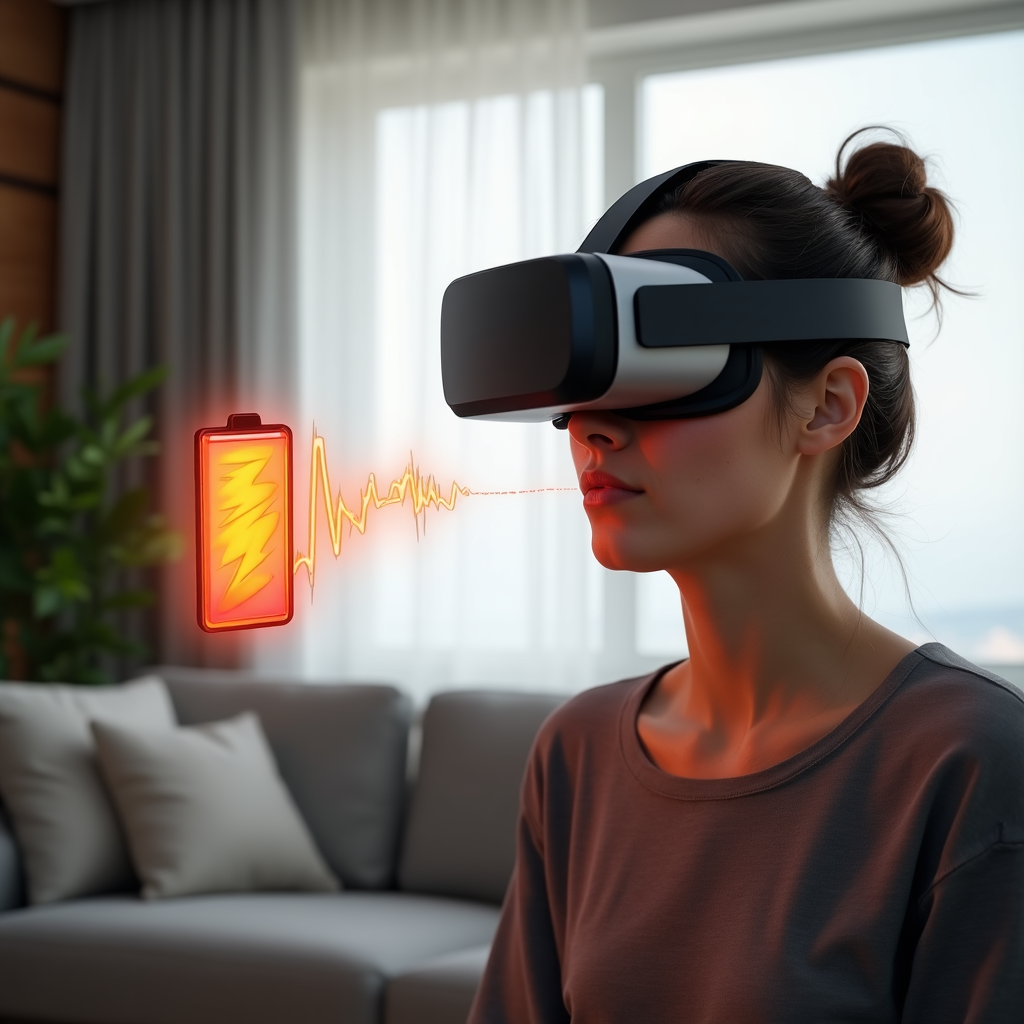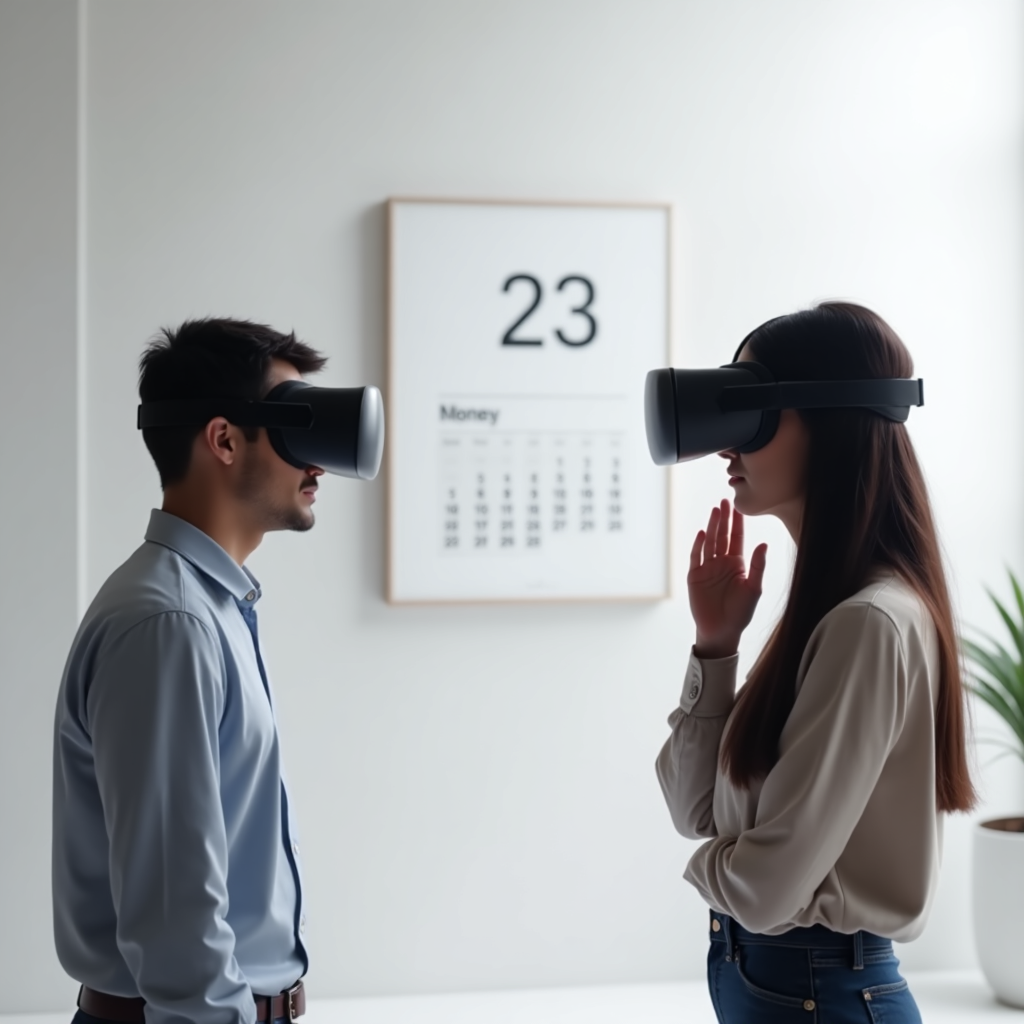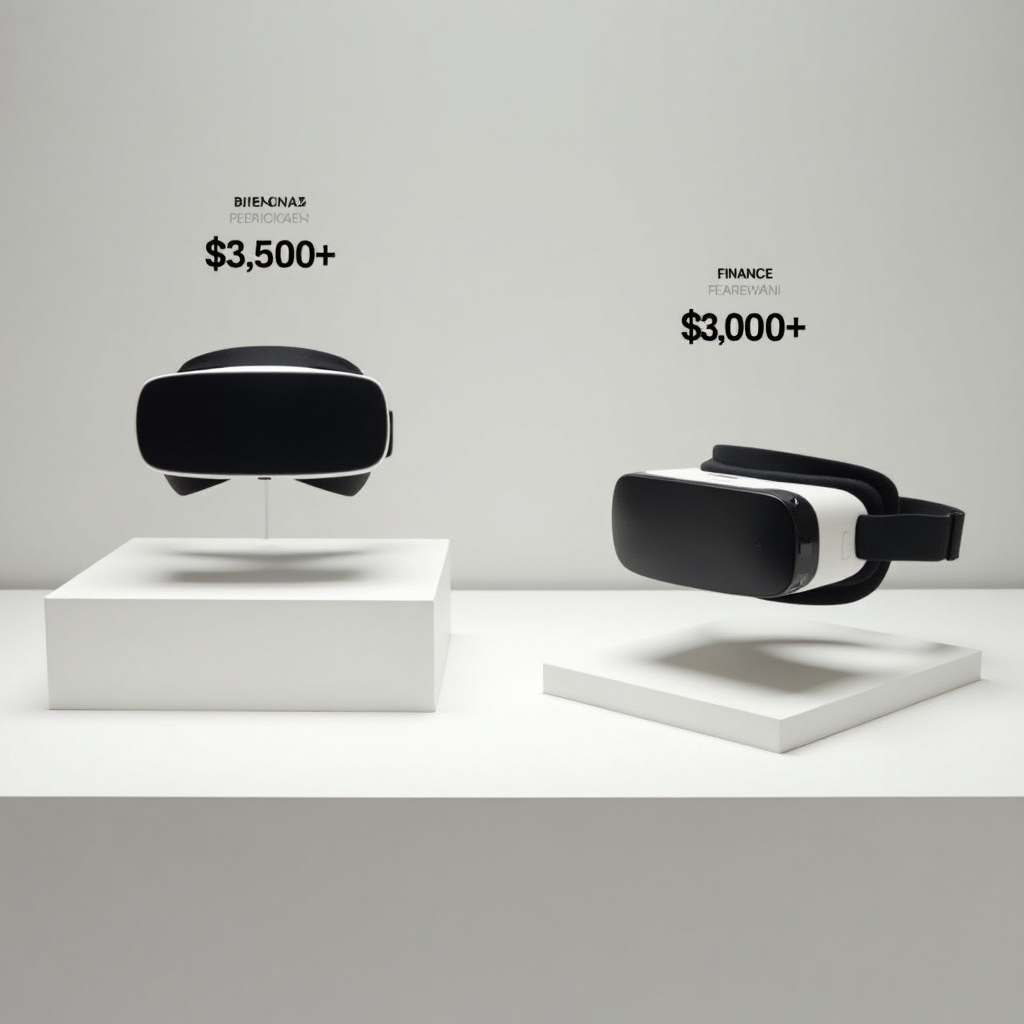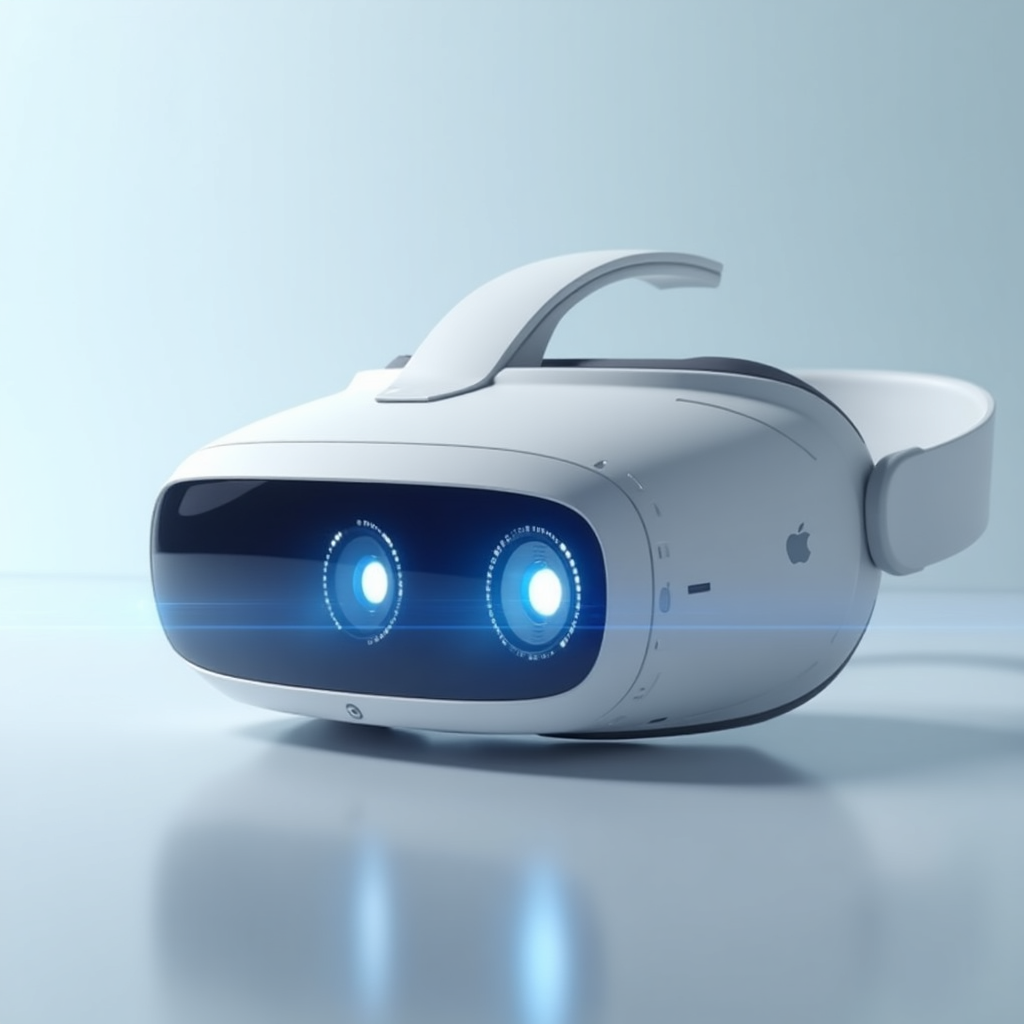The $3,500 Apple Vision Pro 2 hasn’t quite lived up to its “most advanced VR/AR headset” promise, with sales dropping 75% in its second quarter. While the technology impresses, most users find themselves using it primarily as an expensive movie screen rather than the revolutionary device it claims to be.
Despite these challenges, the Apple Vision Pro 2 might be worth the wait. Expected to launch in late 2025 or spring 2026, this next-generation headset promises significant upgrades, including a powerful M5 processor. What’s more interesting is Apple’s reported plan to release a lower-cost version around $2,000, potentially making it more accessible to everyday users.
If you’re considering jumping into Apple’s spatial computing world, you might want to hold off for now. In this article, we’ll explore why waiting for the Vision Pro 2 could be the smarter choice, especially given the current version’s limitations and Apple’s ambitious plans for the future.
Table of Contents
ToggleApple Vision Pro 2 Release Date: What We Know So Far

According to multiple reliable sources, the Apple Vision Pro 2 won’t arrive as quickly as some enthusiasts might hope. Bloomberg’s Mark Gurman, a noted Apple insider, reports that the second-generation headset is now expected to launch “between the fall of 2025 and spring of 2026“. This timeline has been corroborated by other industry analysts, suggesting a significant wait ahead for those holding out for the next iteration.
Latest Rumors Point to Early 2026 Launch
The most current information indicates Apple’s roadmap for 2025 doesn’t include any fresh Vision Pro hardware releases. Nevertheless, Gurman suggests there’s a possibility that the new model might be unveiled in 2025, with the actual market launch projected for 2026. This aligns with supply chain analyst Ming-Chi Kuo’s assessment that Apple plans to release an updated Vision Pro with M5 chip support in 2025.
The extended timeline seems deliberate rather than reactionary. Recent reports from multiple sources point toward a consistent window:
- Bloomberg’s reporting suggests active development is underway
- Multiple tech publications cite early 2026 as the most likely release window
- By 2026, Apple’s “M6” chips will likely already be on the horizon
Why Apple Is Taking Its Time
Apple appears to be focusing primarily on internal upgrades rather than radical design changes. The second-generation Vision Pro will reportedly utilize the company’s next-generation M5 chipset, marking a significant upgrade from the M2 system-on-chip powering the current model.
Furthermore, Apple is reportedly working on improving the “human-machine user interface,” addressing one of the most challenging aspects of head-mounted displays. This focus on refinement explains the extended development timeline.
Additionally, some reports indicate Apple might be simultaneously developing a more affordable Vision Pro model, with prices potentially ranging between $1,500 and $2,500. This budget-friendly version may actually be a more urgent goal for the company, potentially affecting resources allocated to the premium second-generation model.
How This Timeline Affects Buying Decisions
For potential buyers considering the current $3,500 Vision Pro, this extended timeline creates a significant decision point. The lengthy development cycle suggests Apple is aiming for substantial improvements rather than incremental updates.
Those who purchase now will likely enjoy 18-24 months before the newer model arrives. However, given the significant investment required, many might find waiting worthwhile, particularly considering the potential for improved performance and possibly better pricing options by 2026.
Moreover, with Apple’s “M6” chips potentially available by the Vision Pro 2’s release, early adopters may experience a relatively quick technology obsolescence compared to those who wait for the second generation.
Current Vision Pro Limitations That Vision Pro 2 Will Likely Fix

After extensively testing the first-generation Apple Vision Pro, I’ve identified several critical limitations that Apple will likely address in the Vision Pro 2. These issues currently prevent the device from reaching its full potential as a spatial computing platform.
Weight and Comfort Issues
The current Apple Vision Pro weighs between 600-650g (21.2-22.9 ounces) for the headset alone, with the separate battery adding another 353g. This substantial weight primarily sits on the front of your face, creating uncomfortable pressure points on the forehead and cheekbones. Many early testers reported discomfort after just 30 minutes of use, with some experiencing pain after only 20 minutes. The Solo Knit Band, despite its elegant appearance, lacks sufficient support for extended sessions, prompting Apple to include the Dual Loop Band with its top strap as an alternative. Subsequently, reducing the headset’s weight is reportedly Apple’s primary focus for Vision Pro 2.
Battery Life Constraints
Battery performance remains a significant limitation, with official specs indicating only 2 hours of general use or 2.5 hours of video playback. Users running multiple apps simultaneously, screen sharing, or using communication apps like Zoom experience even faster battery drain. Charging from empty takes approximately 90 minutes, and though the device can be used while charging, this defeats the wireless experience many users desire. Curiously, some users reported substantial battery drain (up to 30%) even when the device was completely powered off.
Processing Power Bottlenecks
Despite featuring Apple’s M2 chip alongside a custom R1 processor, the Vision Pro appears compute-limited for its ambitions. The system must simultaneously process multiple data streams—LiDAR, infrared cameras, hand/eye tracking—while rendering millions of pixels with under 12ms latency. This pushes the chips to their limits, causing noticeable warmth during extended use and potentially throttling performance to prevent overheating.
Display Technology Improvements
The current Vision Pro’s micro-OLED display system delivers impressive 23 million pixels, yet suffers from a relatively narrow field of view. Some users report reflective glare when using prescription lenses, limiting immersion. Though still superior to many competitors, several manufacturers are now developing similar micro-OLED displays, meaning Apple must advance this technology to maintain its edge in Vision Pro 2.
Expected Features in Apple Vision Pro 2 Worth Waiting For

Looking beyond the current model’s limitations, Apple Vision Pro 2 promises substantial upgrades that justify waiting for its release. Based on industry reports and development patterns, several key improvements will likely address current pain points while introducing new capabilities.
M5 Chip: Performance Leap for Spatial Computing
The Vision Pro 2 will almost certainly feature Apple’s next-generation M5 chip, which has recently entered mass production. This processor upgrade represents more than just incremental improvement—it’s specifically designed with enhanced AI performance to support Apple Intelligence features that the current M2-powered model simply can’t handle. The M5 chip will likely run significantly cooler, enabling longer periods of full-power operation before thermal throttling occurs. This advancement alone could transform the device from an impressive tech demo to a practical everyday tool.
Improved Field of View and Display Quality
Current testing shows the original Vision Pro delivers approximately 100° horizontal and 77° vertical field of view. Vision Pro 2 could expand this to nearly 113-115° horizontal FOV, creating a more immersive experience. Apple is reportedly exploring OLED panels with approximately 1,700 pixels per inch, which would maintain the extraordinary visual clarity while potentially improving brightness and contrast.
Better Integration with Apple Ecosystem
Vision Pro 2 will benefit from Apple’s continued ecosystem refinements. The company has already introduced collaborative features in visionOS 2 that enable SharePlay in Photos and shared spatial experiences. Perhaps most importantly, upcoming Mac Virtual Display enhancements will create an ultra-wide display equivalent to two 4K monitors side by side, making Vision Pro 2 substantially more valuable as a productivity tool.
New Input Methods and Controls
Alongside improved eye and hand tracking, Vision Pro 2 will incorporate the intuitive new gestures introduced in visionOS 2. The addition of mouse support and broader input options beyond the current tracking systems will address one of the current model’s major limitations. These controls will make navigation faster and more precise, especially for productivity tasks.
Enhanced Spatial Audio Experience
Although the current audio pods deliver adequate sound, they excel primarily at creating a sense of spaciousness. Vision Pro 2 will likely build upon the existing spatial audio foundation, potentially adding more immersive sound capabilities that better match the visual experience, creating truly convincing spatial computing.
Vision Pro 2 Price Predictions and Value Proposition

Pricing remains the most significant barrier to widespread adoption of the original Vision Pro. Given that, many potential buyers are wondering whether the Vision Pro 2 will offer a more appealing cost structure when it arrives in 2026.
Will Apple Maintain the $3,500 Price Point?
The original Apple Vision Pro launched at a staggering $3,500 price tag, placing it well beyond what most AR/VR enthusiasts typically spend, especially compared to the market-leading Meta Quest 3 at just $500. Based on current information, Apple will likely maintain a premium price point for Vision Pro 2, with most reliable sources suggesting it will remain above $3,000. In fact, storage upgrades could potentially push prices close to $4,000 for higher-capacity models.
Consequently, those hoping for a dramatic price reduction might be disappointed. First and foremost, Apple seems committed to positioning Vision Pro as a premium product rather than a mass-market device.
Cost vs. Feature Analysis
From a manufacturing perspective, Apple’s product costs typically run around 63% of retail prices, suggesting each Vision Pro 2 unit might cost approximately $2,200 to produce. The company has reportedly invested over $20 billion in Vision Pro research and development, filing more than 5,000 patents related to the technology.
In contrast to the high-end model, several reports indicate Apple is simultaneously developing a more affordable Vision headset. Pricing rumors range wildly, from around $2,000 down to possibly $1,500 or even as low as $200 according to some less reliable sources.
Potential Financing and Trade-in Options
For those unable to pay upfront, Apple currently offers Vision Pro financing starting at $291.58 per month for 12 months through Apple Card Monthly Installments at 0% APR. Similar programs will presumably be available for Vision Pro 2.
Regarding trade-ins, Apple has not yet confirmed whether the original Vision Pro will be eligible for trade-in credit toward future models. Given that Apple offers trade-in programs for most of its other devices, it seems likely Vision Pro will eventually join this program, potentially reducing the effective cost of upgrading to Vision Pro 2.
Conclusion
Looking at all the evidence, waiting for Vision Pro 2 makes perfect sense for most potential buyers. Though Apple’s first-generation headset broke new ground, its successor promises significant improvements that address key limitations. The M5 chip alone represents a massive leap forward, while the expected weight reduction and enhanced field of view should make extended use much more comfortable.
The price tag certainly remains steep, yet the value proposition becomes clearer with these upcoming improvements. My testing of the current Vision Pro revealed its potential, but also highlighted why patience might pay off. The second-generation device will likely deliver a more refined experience, better battery life, and possibly even more accessible pricing options through trade-in programs.
The extended development timeline until early 2026 might feel frustrating for eager tech enthusiasts. Still, this careful approach suggests Apple aims to deliver meaningful upgrades rather than minor tweaks. Based on the company’s track record with second-generation products, Vision Pro 2 should offer a substantially better experience that justifies the wait.
Ultimately, unless you absolutely need spatial computing capabilities right now, holding off for Vision Pro 2 appears to be the smarter choice. The combination of enhanced performance, improved comfort, and potential cost savings through financing options points toward a more compelling product worth your investment.
FAQs
Q1. When is the Apple Vision Pro 2 expected to be released? The Apple Vision Pro 2 is anticipated to launch between late 2025 and early 2026, with most sources pointing to an early 2026 release.
Q2. What major improvements can we expect in the Vision Pro 2? The Vision Pro 2 is likely to feature the new M5 chip for enhanced performance, improved comfort with reduced weight, better battery life, an expanded field of view, and more seamless integration with the Apple ecosystem.
Q3. Will the Aple Vision Pro 2 be more affordable than the original model? While exact pricing isn’t confirmed, the Vision Pro 2 is expected to maintain a premium price point above $3,000. However, Apple may introduce financing options and potentially a trade-in program to make it more accessible.
Q4. How does the current apple Vision Pro 2 compare to other VR/AR headsets? The current Vision Pro offers superior display quality, audio, and hand tracking compared to most competitors. However, its high price and weight are significant drawbacks compared to more affordable options like the Meta Quest 3.
Q5. Is it worth waiting for the apple Vision Pro 2 instead of buying the current model? For most users, waiting for the Vision Pro 2 is recommended. The upcoming model is expected to address many of the current version’s limitations and offer significant performance improvements, making it a more refined and capable device overall.
